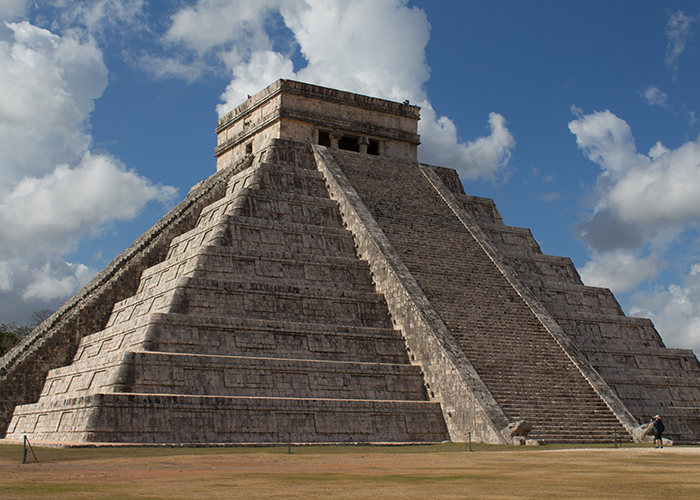 More 2017 Adventures |
Cancún, QR → Chichen Itzá → Cancún, QR 270.9 mi (436.0 km) |
 Next Day |
I spent last night in the super noisy Hotel Los Cuates de Cancún, next door to a party of machine gun toting federales coming and going at all hours, just to get up at 4:00 and help a cab navigate through a police roadblock to take me to another hotel to meet a bus to take me to another bus to head west into the next state and time zone!
Our guide, Marco, started us off with a hearty “Malo Kin” (“Good morning”) to our driver, Eleazar, and gave us some more lessons in the Mayan language along the way. He had picked us up in Cancún (“Snake Nest”) where the Maya had fled after a ten-year drought forced them away from the place we were heading: Chi’ch’èen Ìitsha’, the mouth of the well. After all, the sinkhole at Chichén Itzá was where the Maya believed they would enter the underworld!
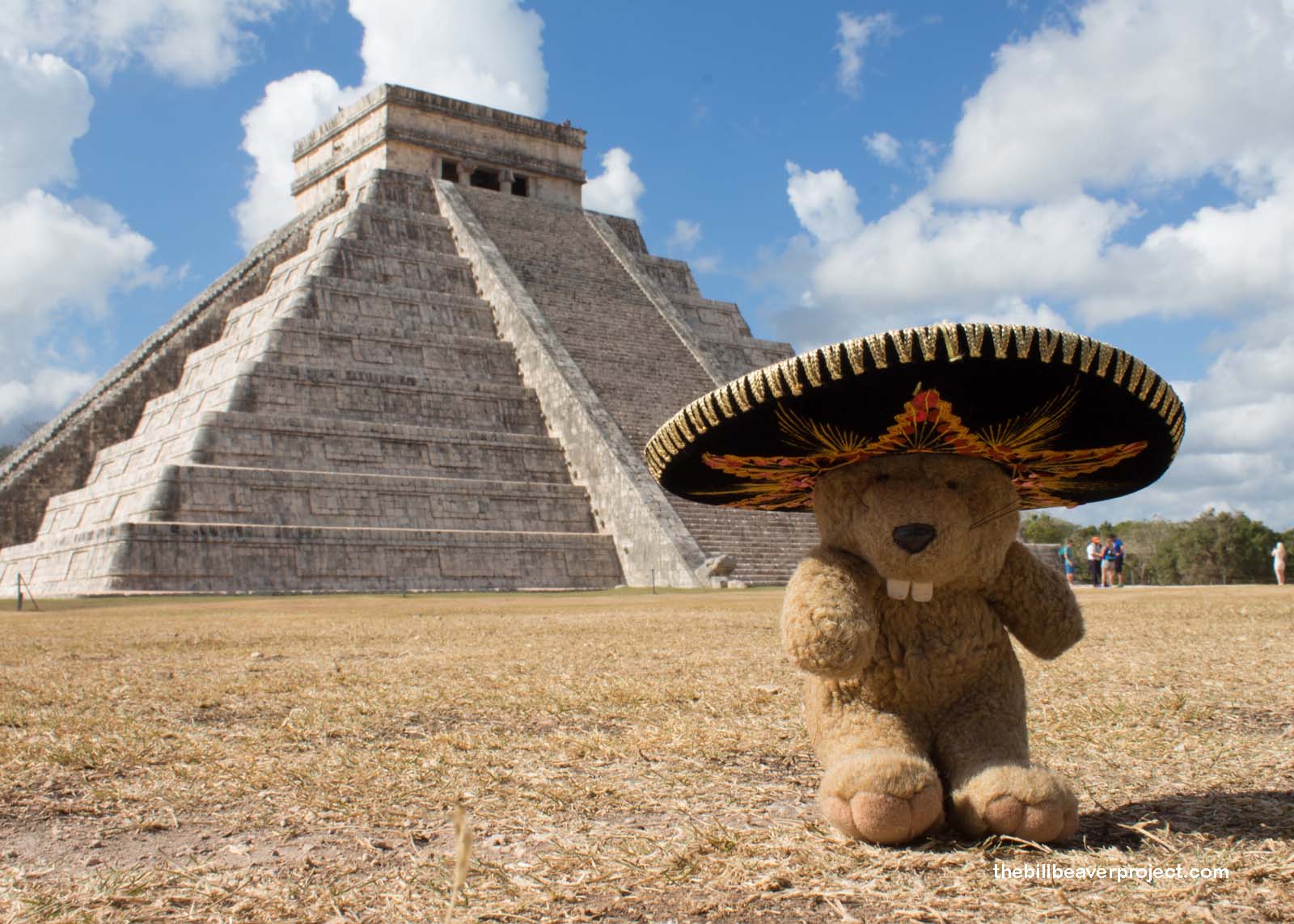 |
The reason we were up so early was to beat the heat and the crowds—10,000 tourists a day—and it was worth it! The views of the great pyramid to Kukulkan were unobstructed and the acoustics, like the chirp of a bird, impeccable!
This pyramid is perfectly designed to chirp like a bird and slither like a snake! At each Equinox, the light of the sun creeps down the corners of the stairs, illuminating a serpent’s body down to the stone snake heads on the ground. Thirteen minutes later, it slithers back up! This was believed to be the feathered serpent god, Kukulkan, descending from heaven to fertilize the land, then return to the sky from whence he came! If the Equinox was cloudy and no serpent appeared, it meant Kukulkan required a human sacrifice!
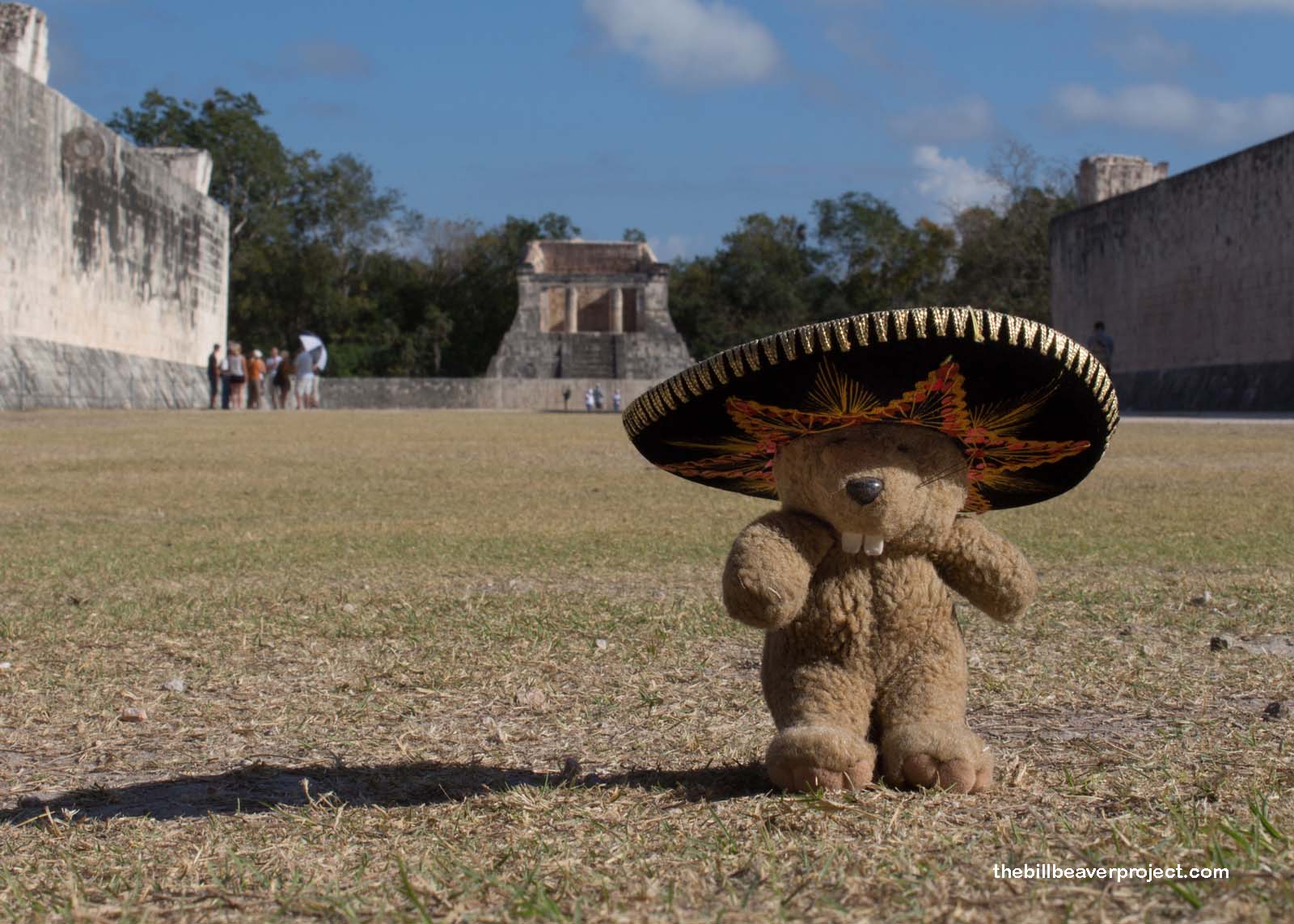 |
Death was an essential part of Mayan life, even in games! If you thought modern soccer fans were harsh, then you haven’t seen Pok-Ta-Pok, the game of two teams maneuvering a hard, rubber ball with only their knees and hips (though the captain had a stick), while trying to shoot the ball through stone hoops high on the field walls. When somebody did score a goal, the game would end, and the winning team captain would be sacrificed for immortality, while the losing captain would have to keep playing!
Our group made a short circle here then stopped to be dismissed for one hour of free time. There was so much to see though! Where to begin? There was the Sacred Cenote, where bodies were dropped directly into the underworld, or the Temple of Warriors, where new warriors would offer blood from their tongues and their lil’ Mayans to the thirsty bowl of Chac Mool! But this ancient city is so huge that it’s really impossible to cover in an hour without sprinting!
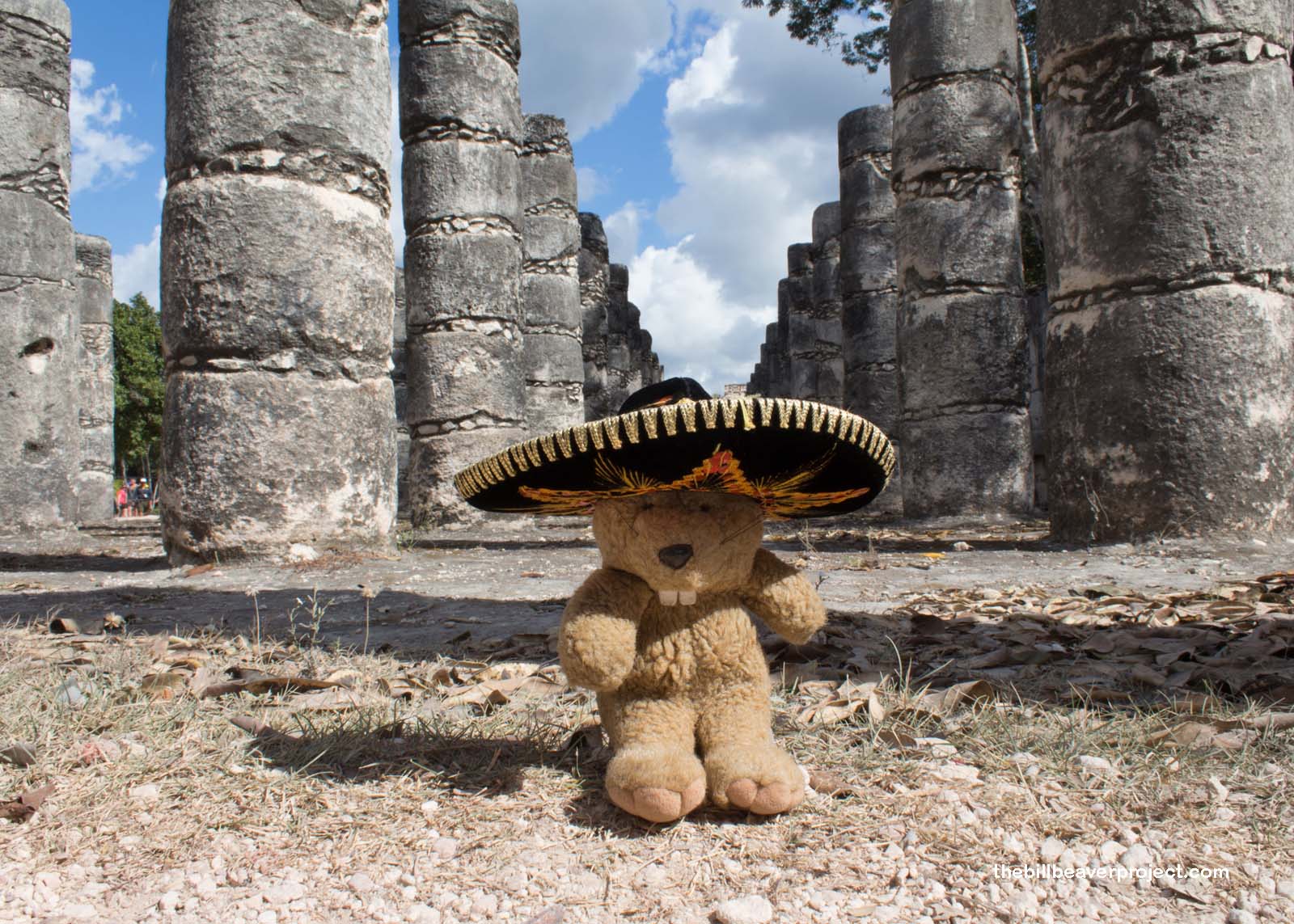 |
So I wandered through the Plaza of a Thousand Pillars, a civic and religious gathering place, and the Mercado, where goods brought along the extensive Mayan network of roads could be bought and sold,
I glimpsed the observatory, called the Caracol for its snail-like spiraling. The Mayans were extraordinary observers of the universe, calculating the orbit of Venus in the days before telescopes, and rather than needing a leap day every four years, they only had to adjust their calendars 5 seconds every 52 years! These dates brought new and special additions to the main pyramid!
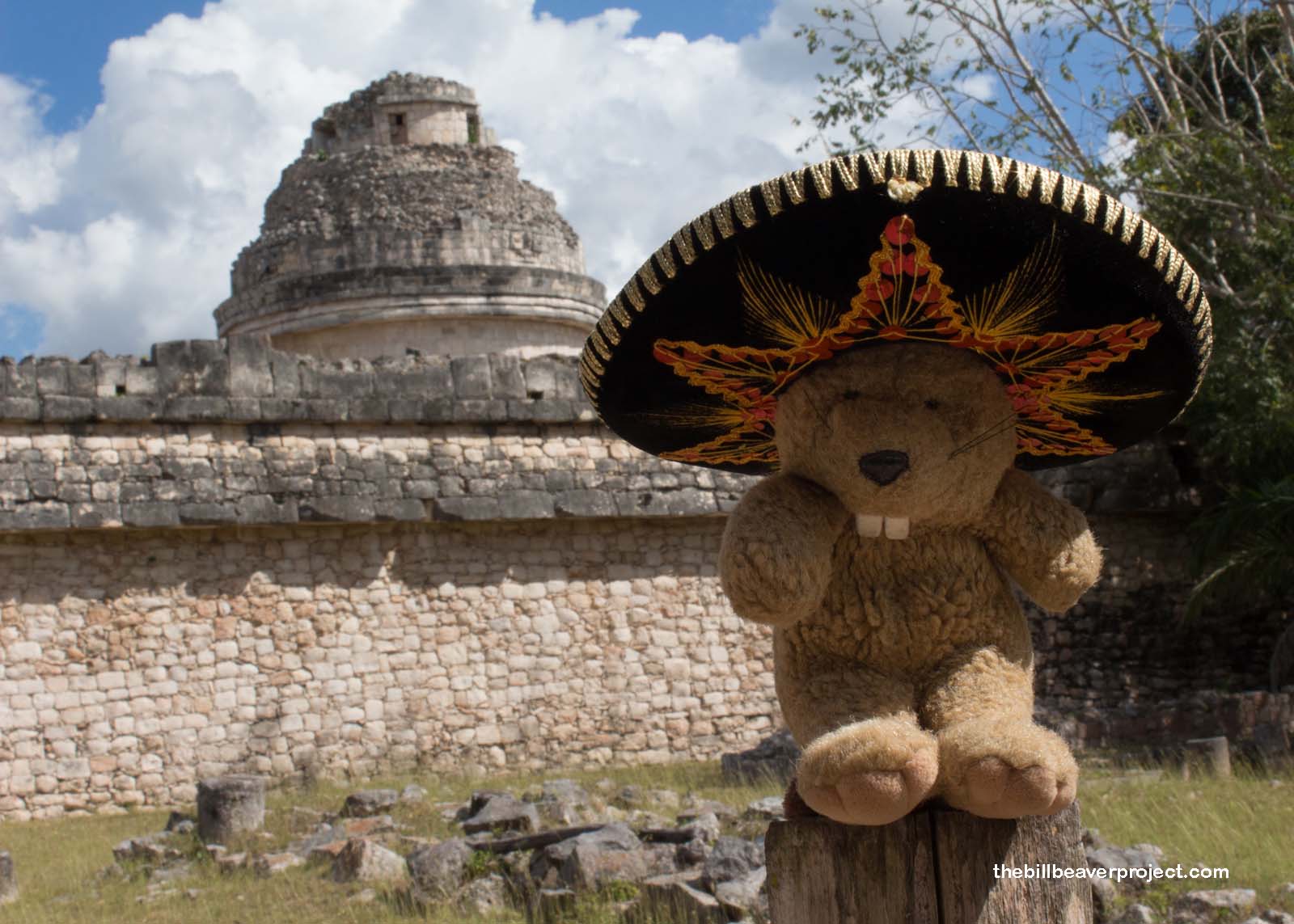 |
Lastly, I visited La Iglesia (“The Church), the most exquisitely carved building in the whole complex! Its function is up to guesswork, since the city was already abandoned when it was rediscovered, but it is intricately carved with animal designs and flanked by the elephantine faces of Chac, the rain god! I wanted to enjoy the artistry longer, but I could not delay. Tours are great for their ease and attention to detail, but they come with a cost of time!
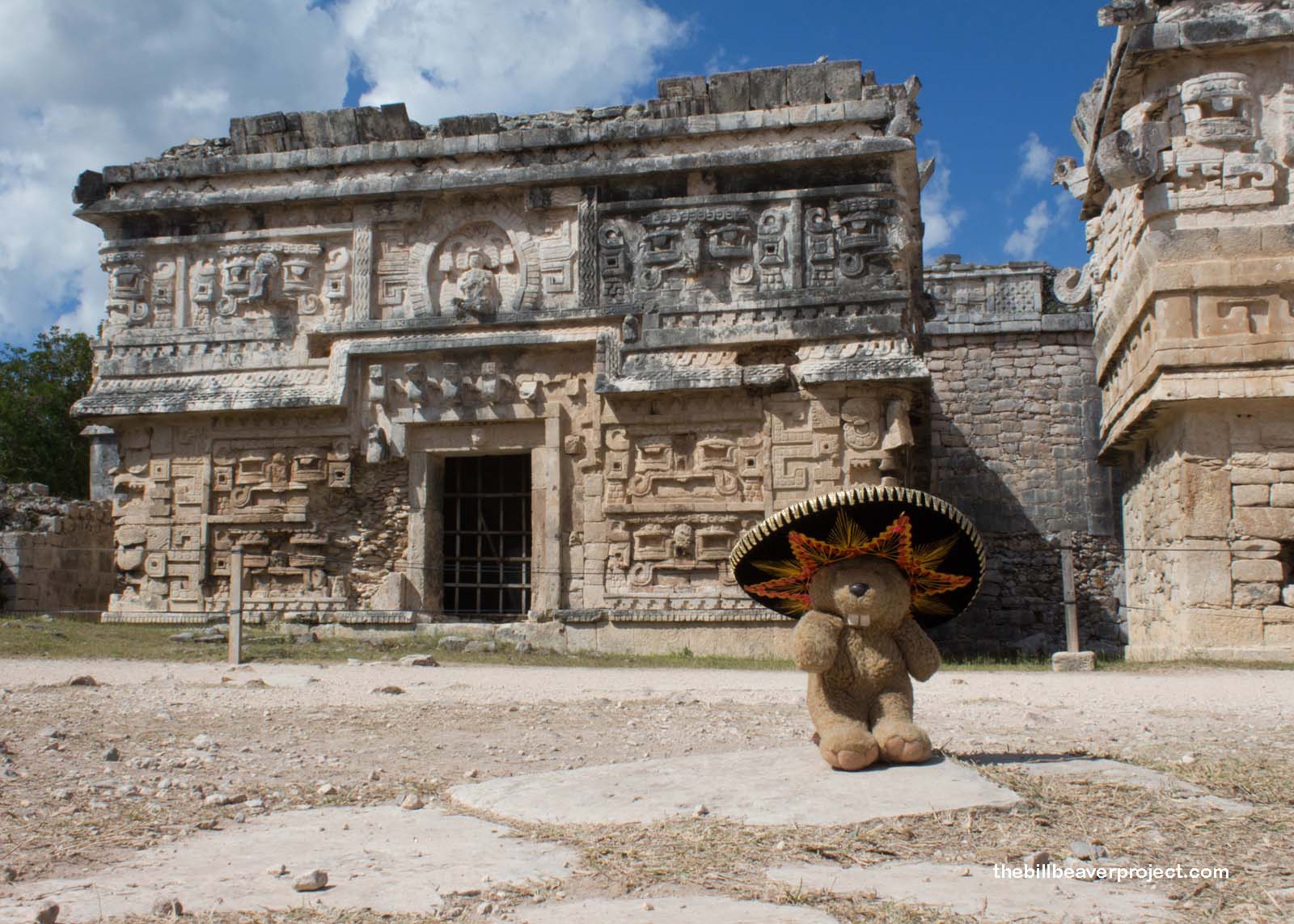 |
Nonetheless, I was extremely pleased to have experienced this Wonder of the World before the crowds and heat, both of which were now pouring in, had shaken off their siestas!
¡Hasta pronto!

 More 2017 Adventures |
Total Ground Covered: 270.9 mi (436.0 km) |
 Next Day |
